For my part of the members’ show “Six Visions,” I’ve chosen some canvases that have been in storage for decades—work I did in the 70’s when I was in my 20s. I liked acrylic paint, and painted quite a few minimalist hard edge pieces with large areas of flat color. Gradually I became interested in gradations of colors of close value. How close could the hues be, and still the shapes be discerned? I did several large paintings exploring this question, two of which are in this show, “Machine in Field,” and “The Curtains in the House of the Metaphysician.”
To paint a gradation in acrylics one has to work quickly; there is no time to worry about edges. So I began to use masking tape to define the areas to be painted. I would place a piece of tape on a glass sheet and carve the shape I needed with a knife, then transfer the tape to the canvas, which was not stretched on a stretcher at this point, but on a piece of plywood so I could work on a hard surface and really press the tape down with my thumbnail.
It’s a thrill “pulling” a gradation across a large canvas with a large house painting brush, going rapidly back and forth, wiping the brush and dipping in new paint of the alternate color at each edge of the area to be covered, rapidly moving back across, wiping, dipping and brushing up and down across the surface again and again until it looks blended. This happens quite quickly—one minute it’s a streaky uneven blend, and the next, suddenly, it’s like light falling on velvet. It’s an exhilarating, and a very physical process on a large canvas—one has to be in shape for it. The acrylic paint dries quickly and sometimes I would resort to spraying the canvas with water to keep it wet enough. Then the paint must dry, and the whole process repeated again before removing the tape. Usually three coats were required.
I continued to paint in this style off and on for about ten years. The later paintings have much greater value differences, and a larger range of color in the gradations. Three are in this show, “Cave Light,” “Wings 2,” and “Wings 3”
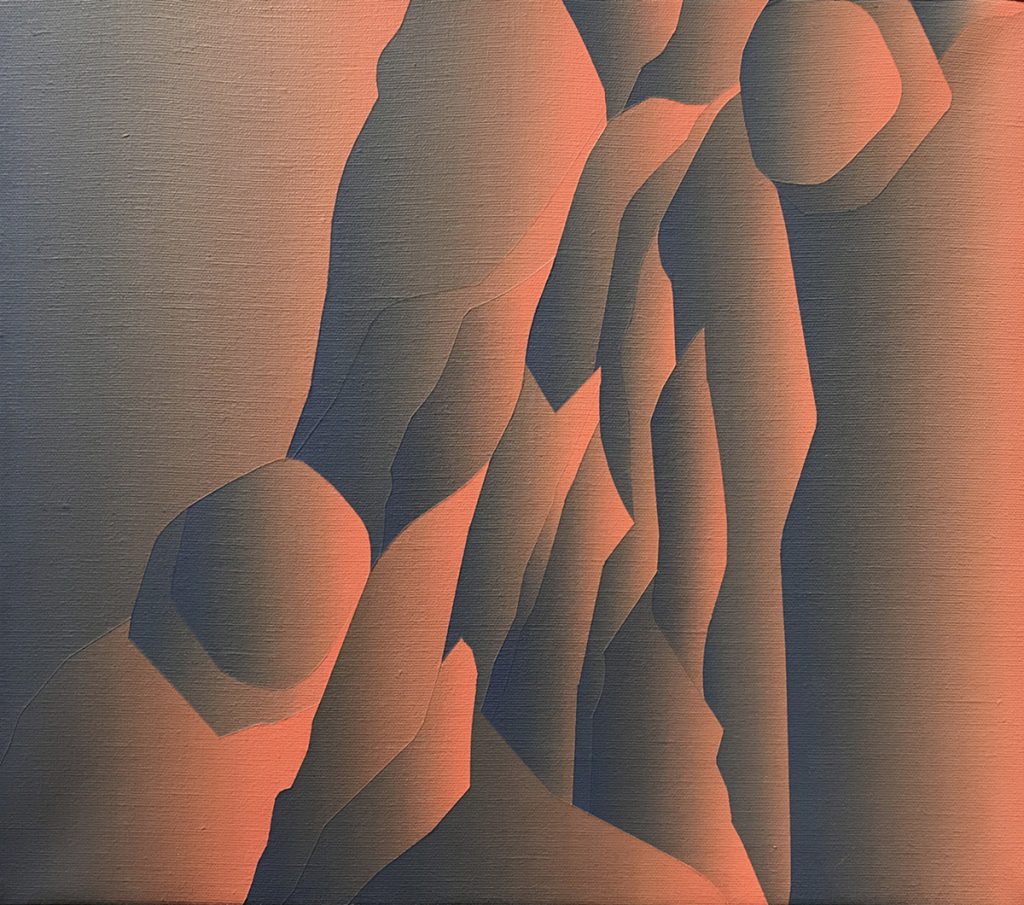
Cave Light 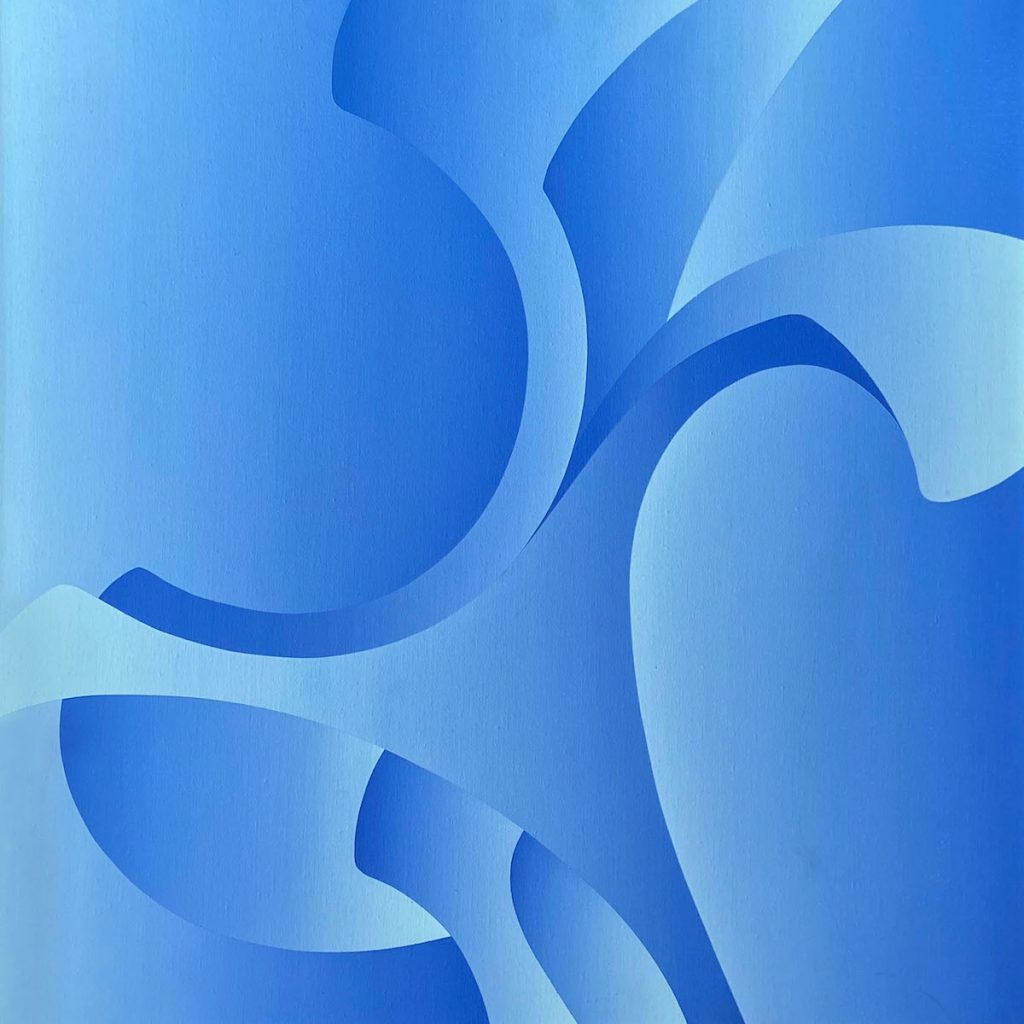
Wings 2 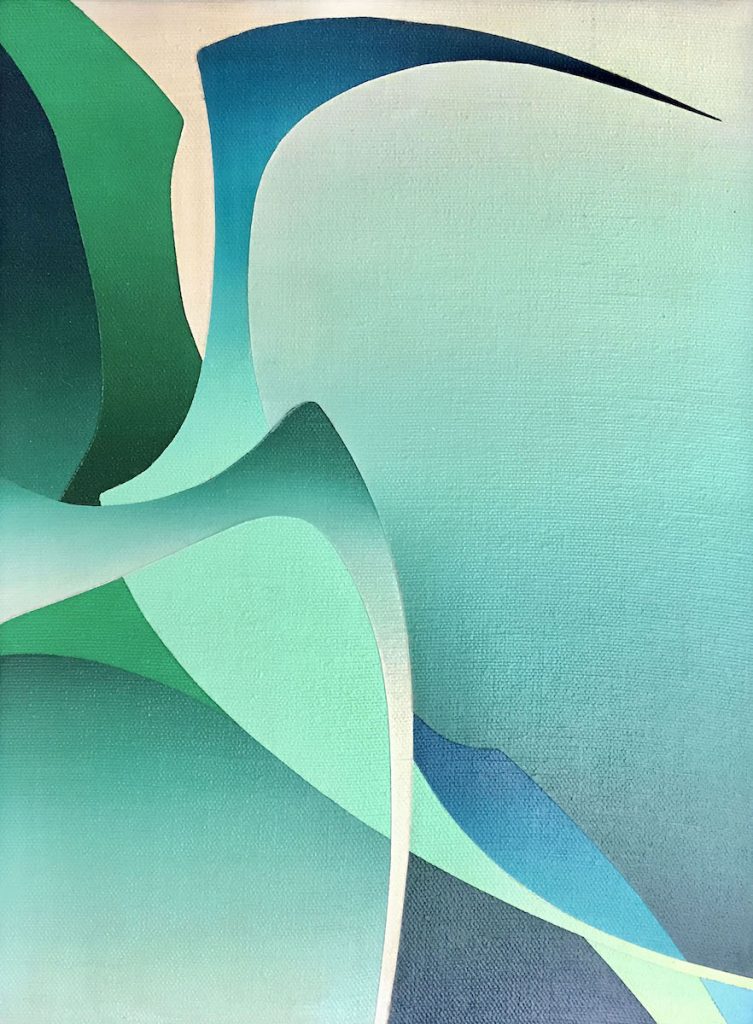
Wings 3
With the advent of computers in the 80s, and the ease of blending gradations with the flick of the mouse, I stopped making these time-intensive works. But there is something quite wonderful about the tiny raised ridges between areas, formed by the paint building up agains the tape, and the way the paint is uneven in subtle ways that don’t happen digitally, even when a digital image is printed on canvas. It’s fun to see these paintings once again after years of digital work, and to recall the enjoyment of the process.

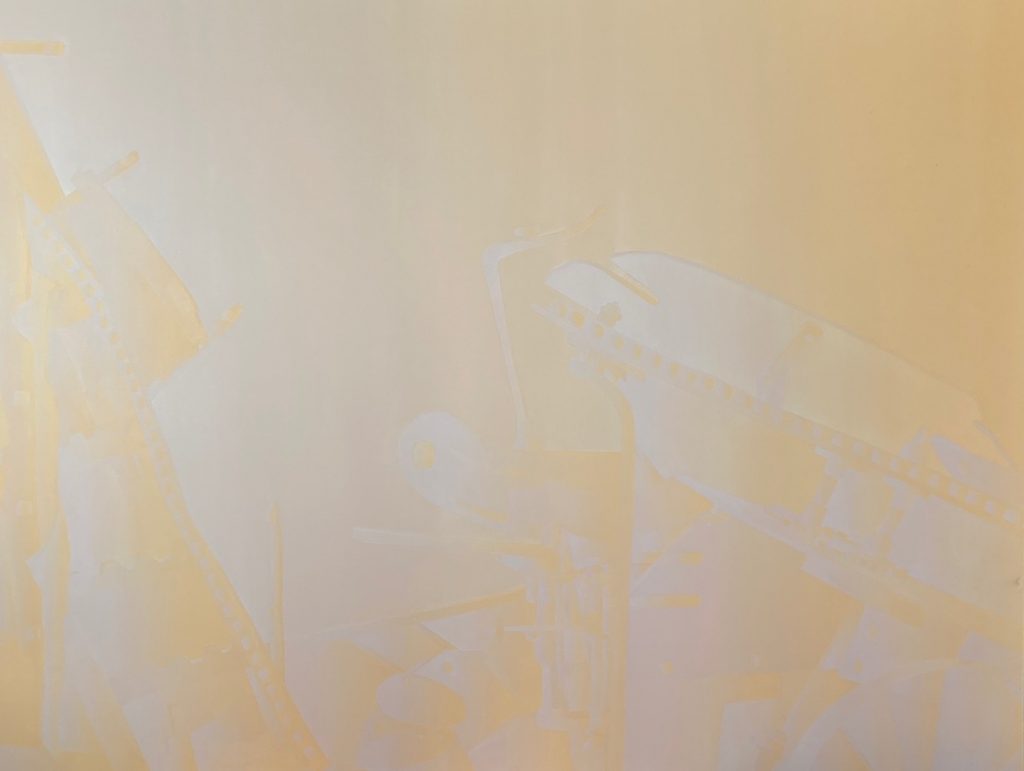
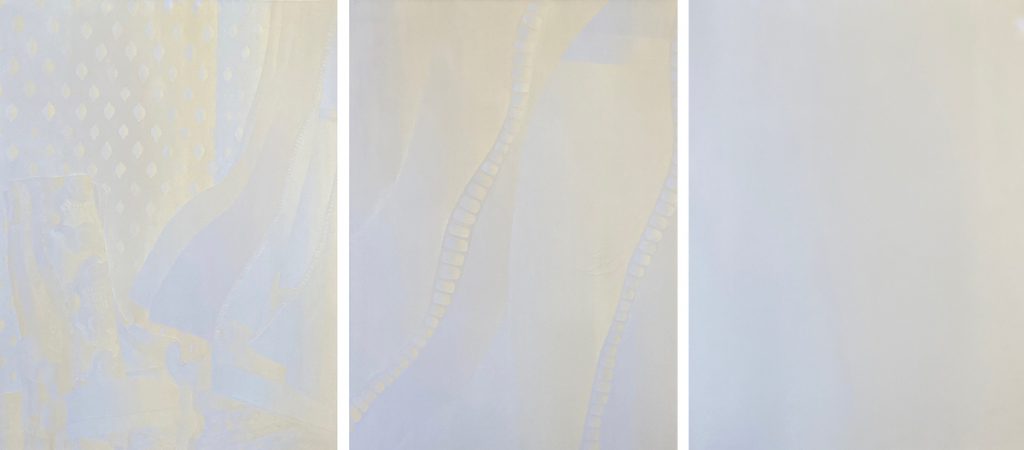
Even though you say you have stopped using this style, I can see your love of delicate gradation in lots of your more recent work, and to me it seems like in some ways you have been very consistent in your artistic vision. It is great to see these older pieces! Wings 3, in particular, has such a fantastic sense of rhythm… very compelling!
I was particularly struck by your commentary: “It’s an exhilarating, and a very physical process on a large canvas—one has to be in shape for it.” Looking at the images gives me the opposite feeling – very controlled and gently rendered in my mind’s eye. Surprisingly, your description fits the wide gestures of abstract expressionism, rather than the minimal color/shape/illusion-of-space compositions shown in this post. I find the images paradoxical – they feel concrete in the deliberate shapes, but suggest deep space, even amorphous infinity, in the gradations. The earliest works are mysterious, and your title that playfully incorporates “metaphysician” makes me chuckle. I agree with Margy – it’s easy to see a thread that runs through your early work to the latest digital pieces
I can’t take credit for the title–it’s the Wallace Stevens poem, “The Curtains in the House of the Metaphysician,” that inspired the paintings. Here’s the poem in it’s entirety:
It comes about that the drifting of these curtains
Is full of long motions, as the ponderous
Deflations of distance; or as clouds
Inseparable from their afternoons;
Or the changing of light, the dropping
Of the silence, wide sleep and solitude
Of night, in which all motion
Is beyond us, as the firmament,
Up-rising and down-falling, bares
The last largeness, bold to see.